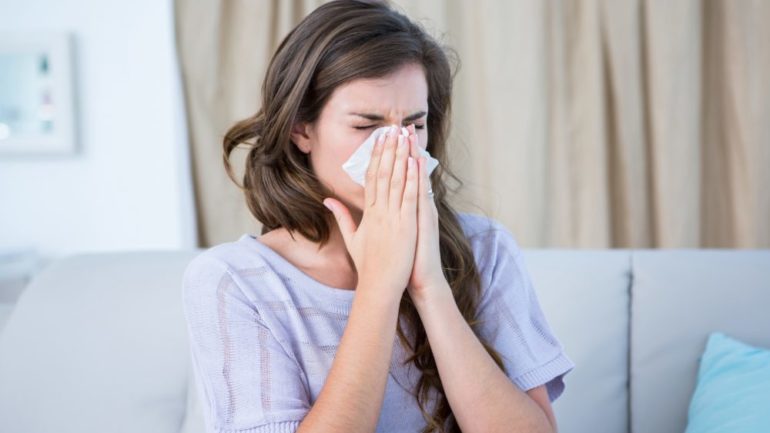For allergy sufferers, some of life’s greatest pleasures can bring pain. Spring brings warmer temperatures and beautiful colors but also an explosion of pollen. Cats and dogs make warm and loving companions but may also make your sinuses miserable. The moisture left behind after a soothing hot bath can lead to mold. Allergens are everywhere, but you can take these steps to keep your home as allergy-free as possible.
Air-conditioning and ventilation
If seasonal allergies plague you, you probably know which particular pollens affect you. Change your HVAC filters monthly, and even more often when the pollens that bother you proliferate. The filters catch pollens and other allergens that get into your home.
Even when temperatures are moderate, keep doors and windows closed and rely on your air-conditioner until your pollen nemesis has passed. If your system uses the thin, fiberglass filters in the wall- or ceiling-return air registers, switch to pleated filters. If allergies are bad enough, research the possibility of converting your HVAC to a whole-house filtering system that uses a single extended box filter to clear home allergens. Or ask your HVAC professional whether your system can work with a High-Efficiency Particulate Air (HEPA) filter. These filters capture very tiny particles and help keep your inside air even cleaner. A HEPA filter can make your HVAC system labor harder, however, so get professional advice on whether your system can handle one.
Electrostatic filters are not recommended for allergy sufferers since they produce traces of ozone gas that can irritate lungs.
If the ventilation fan over your stove merely filters the air over the cooktop but doesn’t vent to the outside, consider converting it. Be sure the fireplace damper is closed when winter has passed.
Related – Benefits of Home Air Purifiers
Vacuum, mop, and dust frequently
Invest in a vacuum with a HEPA filter to remove pollen, dust, pet dander and other home allergens. Vacuum every day during pollen season. Use a vacuum hose with an upholstery attachment to clean sofas and chairs. If your allergies are intense, consider replacing carpets with hardwood or tile floors. If you insist on a carpet, purchase a low-pile style that will trap fewer allergens.
Buy good doormats for people to wipe their feet upon when entering your home, and vacuum them often. Even better, make it a policy not to wear shoes in the house. Ask the same of guests.
Wet-mop tile, and use hardwood floor cleaner to keep wood floors gorgeous and allergen-free.
Every few days, wipe down hard surfaces such as counters, appliances, blinds and other hard surfaces with a damp cloth. Dust furniture with a cloth using furniture polish. Search out dust wherever it may be. Don’t forget ceiling fans, the tops of doors and windows, baseboards, picture and accessory frames, and high shelves.
Fighting a mold allergy
Use bleach-based cleaners for bathrooms, the kitchen and the inside of the refrigerator. Be sure to use ventilation fans in bathrooms, laundry rooms and over the stove when cooking. Clean out clutter beneath sinks, checking carefully for leaking pipes, and wipe all inside surfaces of the cabinet with a bleach-based cleaner.
Use a towel to dry showers and bathtubs after use. Use bleach-based products when cleaning. Once a week, pour a bleach-and-water solution down drains to kill mold.
If moisture is still too high around the house, particularly in places like the basement, invest in a home dehumidifier. Try to keep humidity levels under 50 percent.
Wash bedding and clothes frequently
Wash bedding more frequently than normal when home allergen levels are high. Invest in dust mite-proof covers for pillows, mattresses and box springs. During pollen season, wash your clothes more frequently to get rid of pollen you’ve brought in from outside.
If your curtains are washable, do so periodically. Otherwise, hold the curtains steady with one hand and use your upholstery-cleaning vacuum attachment to remove dust, pollen, and pet dander.


